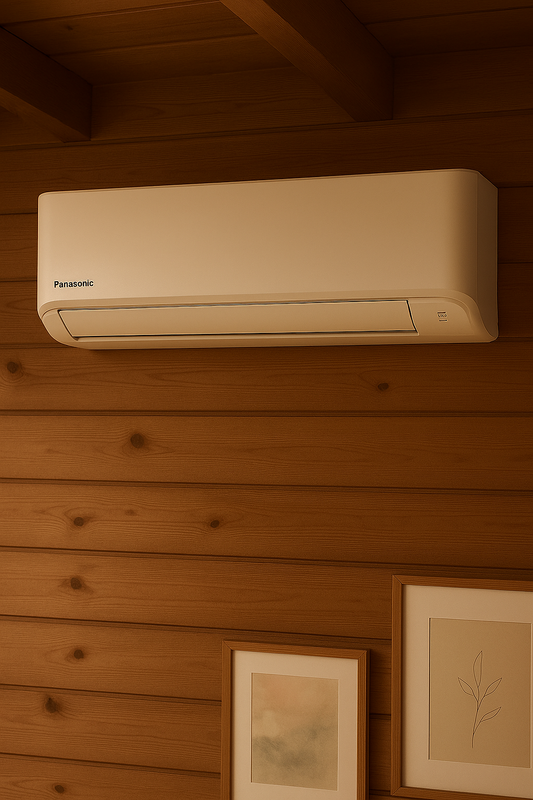Installera bergvärmepump
Inledning
Att installera en bergvärmepump är ett effektivt sätt att utnyttja jordens naturliga värme för att värma upp ett hus eller en byggnad. I denna guide kommer vi att gå igenom processen för att installera en bergvärmepump, dess fördelar och användningsområden, samt vanliga frågor som kan uppstå under installationen.
Definition och bakgrund
En bergvärmepump är en typ av värmepump som utvinner värme från marken för att värma upp ett hus eller byggnad. Genom att utnyttja den jämnare temperaturen under markytan kan bergvärmepumpen effektivt producera värme under hela året. Denna teknik är miljövänlig och energieffektiv, vilket gör den till ett populärt val för många fastighetsägare.
Fördelar och användningsområden
En av de största fördelarna med att installera en bergvärmepump är dess låga driftskostnader på lång sikt. Eftersom den använder jordens naturliga värme behöver den inte lika mycket energi som traditionella värmesystem. Dessutom är bergvärmepumpar miljövänliga eftersom de inte genererar några utsläpp.
Bergvärmepumpar kan användas för att värma upp både bostäder och kommersiella fastigheter. De är särskilt effektiva i områden med tillräckligt med markyta för att installera jordvärmekollektorer eller vertikala borrhål.
Relaterade tekniker, begrepp eller variationer
En vanlig variation av bergvärmepumpen är luft-vatten värmepumpar, som istället använder sig av luften som energikälla. Det finns även hybridvärmepumpar som kombinerar bergvärme med andra energikällor för att skapa ett mer mångsidigt värmesystem.
Vanliga frågor (FAQ)
- Hur djupt måste man borra för att installera en bergvärmepump? - Djupet för installation av bergvärmepumpen beror på markförhållandena och den specifika värmepumpen. Generellt sett ligger djupet mellan 100-200 meter.
- Hur lång tid tar det att installera en bergvärmepump? - Installationstiden kan variera beroende på storleken på fastigheten och markförhållandena. En vanlig installation kan ta mellan 1-2 veckor.
- Vilken typ av underhåll kräver en bergvärmepump? - Bergvärmepumpar kräver minimalt underhåll, vanligtvis en årlig kontroll av en certifierad tekniker för att säkerställa optimal prestanda.
Sammanfattning
Att installera en bergvärmepump är en kostnadseffektiv och miljövänlig metod för att värma upp fastigheter. Genom att utnyttja jordens naturliga värme kan bergvärmepumpar erbjuda låga driftskostnader och minimal miljöpåverkan. Med rätt installation och underhåll kan en bergvärmepump vara en pålitlig värmekälla under många år.
Installation Process
When installing a geothermal heat pump, the first step is to assess the site and determine the most suitable location for the ground loop or boreholes. This may involve conducting a geological survey to understand the soil composition and thermal conductivity.
Once the site assessment is complete, the ground loop or boreholes are installed. This typically involves excavating trenches for horizontal loops or drilling boreholes for vertical loops. The loop configuration will depend on the available space and geological characteristics of the site.
Efficiency and Performance
Geothermal heat pumps are known for their high efficiency and consistent performance. By harnessing the stable temperature of the earth, these systems can provide reliable heating and cooling throughout the year. The Coefficient of Performance (COP) for geothermal heat pumps is typically higher than that of traditional HVAC systems, resulting in greater energy savings.
Furthermore, the long lifespan of geothermal heat pumps contributes to their overall cost-effectiveness. With proper maintenance, these systems can operate efficiently for 20 years or more, providing sustainable heating and cooling for residential and commercial buildings.
Case Study: Residential Installation
In a recent residential installation, a geothermal heat pump was integrated into a newly constructed home. The ground loop was installed beneath the backyard using horizontal trenching, taking advantage of the available space. The system's performance was monitored over the course of a year, demonstrating significant energy savings compared to traditional heating and cooling systems.
Regulatory Considerations
Before installing a geothermal heat pump, it is important to be aware of local regulations and permitting requirements. In some regions, specific permits may be necessary for drilling boreholes or excavating for ground loops. Working with a qualified installer who is familiar with these regulations can streamline the installation process and ensure compliance with all relevant codes.
Remote Monitoring and Control
Many modern geothermal heat pump systems offer remote monitoring and control capabilities. Through the use of smart thermostats and mobile applications, users can adjust settings, monitor energy consumption, and receive maintenance alerts. This level of connectivity provides convenience and allows for proactive management of the geothermal system.
Conclusion
Geothermal heat pumps offer a sustainable and efficient solution for heating and cooling, leveraging the earth's natural resources to provide comfort. By understanding the installation process, efficiency benefits, real-world applications, regulatory considerations, and technological advancements, stakeholders can make informed decisions when considering geothermal heat pump installations.
Energy Savings
One of the key advantages of geothermal heat pumps is their potential for significant energy savings. By drawing heat from the ground in winter and transferring heat back to the ground in summer, these systems can provide efficient heating and cooling without relying heavily on electricity or fossil fuels. This can lead to lower utility bills and reduced environmental impact.
Environmental Benefits
Geothermal heat pumps contribute to environmental sustainability by reducing greenhouse gas emissions associated with traditional heating and cooling methods. The utilization of renewable geothermal energy helps minimize reliance on non-renewable resources and supports efforts to combat climate change. Additionally, the absence of outdoor units in geothermal systems reduces noise pollution and visual impact on the surrounding environment.
Geothermal Heat Pump Operation
During operation, a geothermal heat pump circulates a mixture of water and antifreeze through the ground loop, absorbing heat from the earth and transferring it to the heat exchanger within the system. The heat is then distributed throughout the building via a ductwork system or radiant floor heating. In cooling mode, the process is reversed, with heat being extracted from the building and transferred to the ground loop for dissipation.
Enhanced Comfort and Air Quality
Besides energy efficiency, geothermal heat pumps offer enhanced comfort and indoor air quality. The consistent, gentle heating and cooling provided by these systems can eliminate the temperature variations and drafts often associated with traditional HVAC systems. Furthermore, geothermal systems can help reduce indoor humidity levels, contributing to a more comfortable and healthier indoor environment.
Financial Incentives and Rebates
Many regions offer financial incentives and rebates to encourage the installation of geothermal heat pump systems. These incentives may include tax credits, grants, or low-interest financing options. By taking advantage of these programs, property owners can offset the initial investment and accelerate the return on investment for their geothermal heat pump installation.



